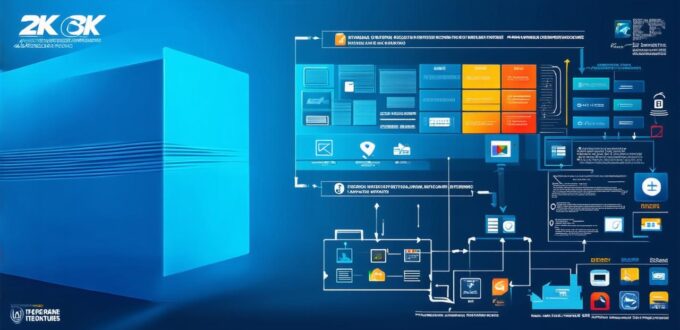Types of System Software:

- Operating Systems: An operating system (OS) is the most fundamental type of system software. It is responsible for managing all the computer resources and providing a user interface. Some popular examples of operating systems include Windows, macOS, Linux, and Android. The operating system provides services such as memory management, process scheduling, and device management.
- Device Drivers: A device driver is a piece of software that allows the operating system to communicate with the hardware devices attached to the computer. Device drivers are responsible for translating the general-purpose instructions of the operating system into specific instructions for each device. For example, a device driver for a printer translates the general-purpose instructions of the operating system into specific instructions for the printer’s hardware.
- System Utilities: System utilities are software programs designed to help users manage and maintain their computers. These programs typically provide features such as disk cleanup, file management, and network configuration. Examples of system utilities include CCleaner, Disk Cleanup, and Network and Sharing Center. System utilities help in optimizing the performance of the computer by removing unnecessary files and freeing up memory.
- Middleware: Middleware is software that provides a platform for application software to communicate with each other and with the operating system. Middleware allows different applications to share resources and data, making it easier to build complex systems. Examples of middleware include Java Virtual Machines and .NET Framework. Middleware enables communication between different systems by providing a common language and protocols.
- Embedded Systems Software: Embedded systems software is designed specifically for use in embedded systems, such as routers, appliances, and automobiles. These systems typically have limited resources and require real-time performance. Embedded systems software must be optimized for the specific hardware and operating environment. For example, firmware used in cars must ensure that the car functions safely on the road.
Case Study:
Let’s consider an example of a software development project that requires knowledge of different types of system software. Suppose we are building a web application that will run on a Linux server. In this case, we would need to use device drivers to communicate with the server’s hardware devices, such as the network interface card and storage devices. We would also need to use middleware, such as Apache HTTP Server and MySQL Database, to provide a platform for our web application to run on. Additionally, we would need to use system utilities, such as SSH and SCP, to securely transfer files between our development machine and the server.
Expert Opinion:
According to Dr. Andrew Tanenbaum, a computer scientist and operating systems expert, "An operating system is the most important piece of software in a computer. It provides the foundation for all other software and manages the computer’s resources." In his book, "Operating Systems: Concepts and Principles," he emphasizes the importance of understanding the different types of system software and their functions. Dr. Tanenbaum also stresses that operating systems are critical in ensuring the security of a computer system by providing mechanisms for controlling access to system resources.
FAQs:
1. What is the difference between system software and application software?
System software manages and controls the computer’s resources, while application software is designed to perform specific tasks for users. System software provides services such as memory management, process scheduling, and device management, while application software performs specific tasks such as word processing or web browsing.
2. Do all operating systems have device drivers?
Yes, all modern operating systems have device drivers to manage and communicate with hardware devices. Device drivers are essential for ensuring that the operating system can properly interact with the computer’s hardware.
3. What is middleware used for?
Middleware provides a platform for application software to communicate with each other and with the operating system. It allows different applications to share resources and data, making it easier to build complex systems. Middleware enables communication between different systems by providing a common language and protocols. For example, middleware can be used to enable communication between a web server and a database server.
4. Can embedded systems use general-purpose operating systems?
No, embedded systems require specialized operating systems that are optimized for their specific hardware and operating environment. Embedded systems have limited resources and require real-time performance, making it essential to use specialized operating systems designed specifically for these requirements.
Conclusion:
In conclusion, understanding the different types of system software is crucial for software developers. Knowledge of device drivers, middleware, and embedded systems software is particularly important for building complex
